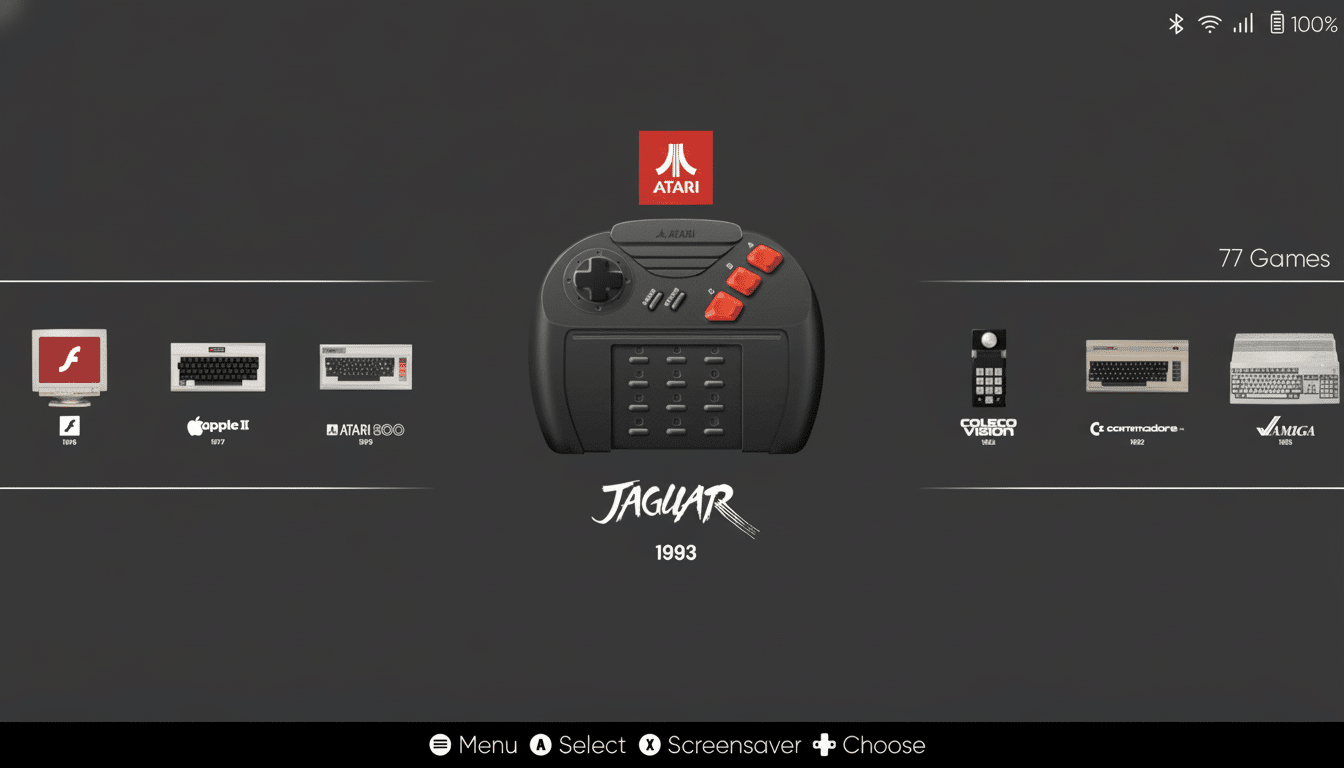ES-DE has just released version 3.4.0, and the popular emulation frontend is ticking a handful of items off our wishlist all at once: system support for PlayStation 3, Steam and Epic Games Store, a built-in game time tracker, a desktop-like Bluetooth/USB device and network manager, as well as tons of Android changes including DualSense/Sixaxis support, improved pixel bar indicators, and integration for a new PS2 emulator called ARMSX2.
ES-DE is the connective tissue that keeps sprawling game libraries tidy and easy to launch for those fed up with a mess of standalone emulators. You can even make it your device launcher and turn a phone or tablet or, God forbid, one of those newer Android handhelds into the console-like setup your game room is screaming for, filled with box art and metadata information — now with playtime statistics.

PS3 and Storefront Entries Land in the ES-DE Menu
“PS3 support” on a frontend level, i.e., ES-DE now knows what PS3 is as a system, as do assets, scraping rules, and launcher hooks. On desktop, this generally involves pairing with RPCS3; and on Android, it mainly assists in organizing collections and getting ready for compatible launching methods (which should be completely straightforward at this point, as native PS3 emulation on mobile is still new). If nothing else, your library gets a real PS3 shelf — instead of some generic folder.
ES-DE 3.4.0 further includes system entries for Steam and the Epic Games Store, streamlining consolidations of PCs and retro libraries to a single interface. Deploying these storefronts on Android typically requires streaming products or remote desktop clients, but the frontend consolidation has good value for those who are archiving all their games to a single master library across devices. It is the same concept that caused living-room launchers to find popularity in HTPCs: one menu to access all of your games.
Aging Power Added to Your Backlog with Time Tracking
Taking a page from Steam, the new time tracking in ES-DE shows you how long you have really been playing that title. That data powers useful sorting options — top-played, recently active, or long-neglected — handy when you’re ad hoc processing a stack of year-old apps or curating favorites. It’s also in line with contemporary platforms and their minimum threshold of hours played.
More than simply bragging rights, basic analytics can push decisions in a smarter direction. For a retro RPG that has reached 25 hours, you would have very few questions about where you left off. If you have multiple ports of the same classic sitting in your library, statistics on playtime might tell you which version is the one that all that time is actually being spent on. The feature is lightweight, privacy-conscious, and great for a household where everyone shares a device — everyone’s habits are visible without needing third-party add-ins.

Android Updates for Big and Split Screens
On Android, ES-DE now behaves better with dual-screen devices, allowing you to select the display you want at app launch. That’s a quality-of-life win for foldables and split-screen tablets where your preferred control layout may vary by game. Samsung users also have official DeX support — though you’ll need to be on One UI 8 — allowing you to dock a Galaxy device, connect a controller, and give ES-DE the vibe of being a living-room console interface on your TV or monitor.
The update also adds ARMSX2 as an alternative PS2 emulator option. Now, with renewed interest in PS2 for Android, you can select ARMSX2 directly in ES-DE to make it easier for players who want to test performance profiles across emulators. Throw in wider language support, compatibility with more types of media, and a new splash screen that plays up its ES-DE branding, and this release feels like a holistic tidy-up rather than simply a headline feature drop.
A Cleaner Hub for a Messy Hobby of Emulation
Emulation is the product of choice, but from that freedom grows clutter. Sitting atop the madness are frontends — ES-DE caters to everyone who wants clean file structure, metadata normalization, input profiles, and now playtime data. Contrasted against all-in-one applications when you’re locked into specific emulator “cores,” ES-DE’s launcher method allows a loose, best-of-breed aggregation of emulators for each system while presenting a unified face to the player.
An Android version of ES-DE is available for purchase and would be most functional for someone playing on a dedicated handheld or plugged-in phone. For those users, the prize is clarity: entries for PS3 and storefronts getting rounded out in the menu, a meaningful playtime tracker, and mobile-first improvements with foldables and desktop modes. It’s all part of a practical update to minimize the friction, and in emulation we all know that fewer hoops often means more time actually playing.

